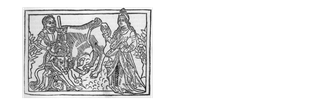Pictorial Reception of Myths in the Middle Ages and the Art-Historiographical Discourse about Epochs

This project intends to analyse a fundamental explanatory model of modern art historiography, to investigate its validity and to discuss its alternatives: the so-called survival (Nachleben) of the deities of classical antiquity in the middle ages. It questions an essential historiographical idea that is closely related with concepts of the survival: the simultaneous diachronic projection of the roots of a certain culture and of a radical alterity onto a specific historical period. Such an antithetical position has been proposed for medieval references to pagan culture of Roman antiquity; it has also been elevated to a distinguishing mark against the Renaissance. Given that the middle ages' highest degree of alterity towards antiquity has been ascribed to it's attitude to image-worshipping (idolatry), the project will focus on the pictorial reception of deities of classical antiquity. The 19th and 20th century art-historical research of the reception of antiquity, which to a greater part has agreed on vitalistic concepts of a survival, is taken as a starting point for the project, which will pursue its goal – a historically appropriate explanation – on two paths:
- Modern concepts of the survival will be analysed on the basis of influential texts from the relevant period in terms of explicit and implicit models of culture and periodisation. At the same time it will be examined to what extent the suggested medieval reception patterns against antiquity reflect the relationship between modern art history and the periods of its devising, in particular in which way the respective concept of medievality served to a modern self-positioning.
- The project will examine a representative selection of examples of artistic transmissions into the middle ages and their specific historic conditions and intentions of reception to conceive and discuss possible alternatives to the vitalistic concepts. Particular emphasis is given to the critical analysis and examination of the so-called principle of disjunction, which has dominated the scholarly discourse. According to this principle, form and content (or subject and theme) of classical art have fallen apart in the middle ages and were only brought together in the modern era.
Funded by


